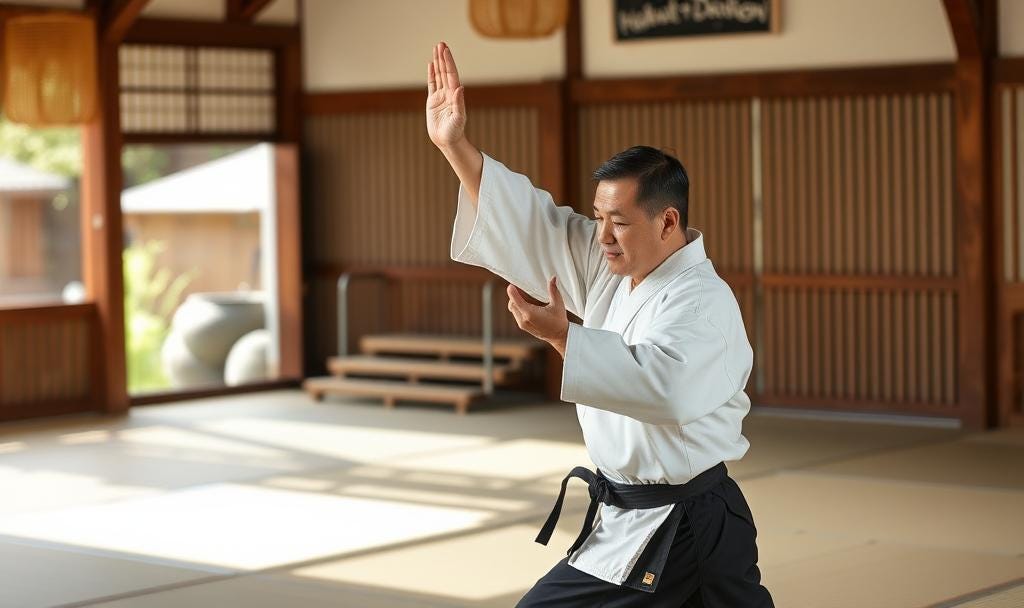Life throws punches—challenges that bruise us emotionally and mentally.
Aikido, a Japanese martial art rooted in harmony, offers a profound lesson for facing these storms.
Unlike aggressive martial arts, Aikido emphasizes a grounded, still ready stance (kamae). This stance, unlike the constant motion of boxing or Taekwondo, embodies stability. Practitioners maintain a low center of gravity, connected to the earth, reflecting the Taoist principle: “The heavy is the root of the light; the still is the master of the restless.” Like a tree with deep roots, this groundedness anchors you amid chaos.
When an opponent strikes—be it a punch, grab, or swing—Aikido teaches you to move with the attack, not against it. Stepping slightly off the line of force, you avoid harm while staying close. By blending with the attacker’s energy, you use circular motions to extend or spiral their movement, unbalancing them.
With minimal effort—a step, a turn, or a shift of weight—you guide the attacker into vulnerability. Techniques like throws (irimi-nage, kote-gaeshi) send them tumbling, or joint locks (ikkyo, nikkyo) immobilize them harmlessly. Aikido neutralizes threats without domination.
Once the threat is resolved, the practitioner returns to stillness, not pursuing or punishing. The attacker is either grounded or safely pinned.
While throws and locks appear in other martial arts, Aikido’s emphasis on a calm, centered mind is unique. It requires practitioners to remain unattached, fully engaged with the present.
By rooting yourself in this unchanged stillness, you can face life’s storms—grief, stress, or conflict—with effortless grace, redirecting chaos into balance and emerging unshaken.




